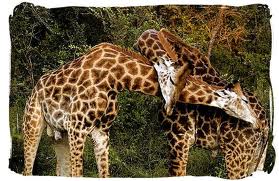Guianan Cock
This dazing male Guianan Cock is perching gay bird. Homosexuality is not chosen, though. It is a nurture and nature of how its kind communicates.
A statistics of male population associates with their own gender. It may also seem alarming to human, like humans, a fraction of the bird population may not even fly out with female Guianan Cock. At least this rendezvous does not endanger their species. It just their way of life.
Gray Whales
They are huge and social animals capable of intricate and complex communication. However
multifarious their way thru the waves is not clear how thier communication brought in a perplexing level of gay whales. It's even exciting that this would involve group of males, not two but as many as four or five or however there are available males in the school. How they do their ways apply to how heterosexual whales perform: splashing, slipping side-to-side, rubbing fins and bellies and all parts including their genital parts.
Walruses
Not much is known about the walrus since the animals inhabit some of Earth’s most remote places. But researchers are beginning to observe some remarkable things about walrus behavior: not only are they very musical, but they are also very gregarious and sexual. Matthew Brunwasser reports. Sexual maturity commences at about four years from birth. One male may have as many female walruses within his reach. Masochism is very perceptible with them. Nonetheless, before the height of their male-female contact, homosexuality is reached during the early years of sexual development: the 4th year. Male walruses do not end this behaviour, though, at the breeding seasons since like almost all animals, they would rub each other and accompany each other in hunting, feeding and sleeping.
Swan
Swans would be an interesting focus in birds. They are the stealers and the surrogates. In homosexualty, males swans are fidel. The couple would stick together for number of years. Now, this does not do away their desire to have ducklings of their raise. They steal nest from other hetero swan couples and hatch these eggs as their own. Male couple takes turn with the nest. No sole one plays the role a female but both.On some atypical occasions, one male would copulate with a female swan until she lays her eggs. Thereon, the male swan along with his male mate assumes the nest and drives away the female.
Antelopes
Antelopes are out of the ordinary homosexuality in the wild. This involves mostly females. Mating season is when mounting with other females antelopes is observed. One slithers to another one's behind close enough to the genitalia. Foreplay takes the course until mounting culminates the activity. Ultimately, homosexuality only shows to female antelopes but no records show anything from the male antelopes.Giraffes
In its height and posture, giraffes are considered the tallest land mammal and animal. It is the neck that causes their unsurpassed height, tall enough for their diet. They needed to reach plants towering the savanna. History says they use to wear average length of neck but due to survival , evolution shaped them as how they loom the horizon.
Eventually, sexual activities also involve their neck. It have more nerves for sensations to find their balance and ways through the woods. Therefore, it is also the body part that is fill with mirth or pleasure. About 5% of male girrafes participate in neck titillating with its own gender kind.
Bottlenose Dophins
Marine animals like the bottlenose dolphins are generally genial animals. Like the gray whales, splashing and slipping are commonly palpable with homosexual bottlenose dolphins. One thing that keeps them apart from the usual marine wild is their oral stimulation they exercise. Using their snout, they would rub and touch the erected penis of another male companion as they stream the waves. A 50-50 statistics (in percentage) is observed between homosexual to heterosexual activities in them.
Bison
American bison has a 1-time annual breeding season. That means that female bisons are readily and submissively partake in the copulation just once and only once every year. This is what is causing male American bisons to divert their sensation to other male bisons. Male couple could engage in several heterosexual activities everyday as oppose to female biological availability.
Macaques
Macaques can be found throughout Asia and Northern Africa , hence, winning them the title as the most widely dispersed genus of nonhuman primates. Another science use of macaques is the experimentation facilitating to AIDS research.
It is the female macaques which are recognizably adoptive to regular and daily genital stimulations at many times from their own kind. They demonstrate their satisfaction brought about by genital stimulation thru cackling loud noise. Surprisingly, they are monogamous creatures.
Bonobos
Banobos are the most sensational primates if one sees how they perform sexual encounters. Why is that so? One banobo lays down facing the mate and the other one pins him/her down vis-à-vis. For lack of better terminology, this is called "Missionary Position" among ourselves. (May I excuse if any kind of vulgarity is presented; It's for science and layman's understanding). As is considered one of the closest relatives to homo sapiens, they exhibit sexual likeness for homosexuality. Oral and anal sexual activities are documented among male Banobos; yet a staggering 75% of female Banobos are engaging to homosexuality.









No comments:
Post a Comment